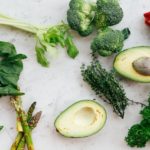Everything You Need To Know About The Keto Diet Is Right Here!
Have you been thinking about trying the keto diet and would like to know more? Or perhaps you are looking for a way to lose weight and have heard that the Ketogenic diet is popular for weight loss. Whatever journey you are right now on, rest assured that you are in the right place. I will take you through the most common questions on the Ketogenic diet.
By the end of this article, you will have a better understanding of all things Keto! And hopefully, these answers will make it easier for you to decide whether or not the keto diet might be something for you.
So sit back and relax…and discover the keys to achieving your health and fitness goals THIS year!
Ketogenic Diet Review
1. First, let’s start with the simple question, what is the Ketogenic diet?
Ketogenic, also known as the keto diet, is a low-carbohydrate (carb), adequate-protein, and high-fat diet or eating plan. In other words, more greens on your plate with moderate size meat, poultry, fish, or plant-based protein and limited carbohydrate food.

2. Where does the name Ketogenic originate from?
You probably have seen the word ketosis whilst seeking information on weight loss or diabetes.
Basically, the word ketosis means— the state of having a lack of carbohydrates in the body necessary to burn fuel – this state or process is called ketosis.
The body is an incredibly unique and complex organism or “machine”. It actually knows how to self-regulate itself and in simple terms how to fix imbalances or disturbances that may arise.
Amazingly, when you reduce excessive carbs and replace them with protein, your body will turn the poor fat into good fat. This fat is used as fuel for your body instead of carbs providing you with a balanced body and positive brain energy. Your body as a result achieves ketoses. During this process or the metabolic state, your liver turns the fat into microscopic molecules called Ketones.
And it can take up to 7-30 days for your body to achieve this state.
Hence, the aim of the keto diet is to push the body toward ketosis or to lower carbohydrate consumption.

Carbohydrates
3. What are carbohydrates?
Carbohydrates or carbs are a set of macronutrients—found in most food and drinks. Essential for your body, carbs provide your body and brain with energy and help you function at your optimal state. All fruits, vegetables, bread, grain products, sugar, and sugar foods are rich in carbs. Some food and drinks have more carbs than others. Unfortunately, this means you will have to pay better attention to your carb intake during your diet!
Now that we have defined carbohydrates, you are probably wondering if there are any differences.
4. 3 Types of Carbohydrates
Yes, there are three main types of carbohydrates that provide your body with nutrients, energy, and other health benefits.
Rice, grains, cereals, wheat, and legumes are all complex carbohydrates
*Generally, your body can not process starchy foods but will break down the starch into smaller sugars known as glucose or fructose for your body to absorb.
Legumes, vegetables, nuts, seeds, and whole-grain foods are all sources of dietary fiber
*Carbohydrate fiber is essential for a healthy digestive system Additionally, carb fiber may also help reduce cholesterol, and chronic disease, and help with the regulation of glucose levels.
Fructose, glucose, maltose, lactose, sucrose are all sugars
*It is best to avoid processed sugars at all times

5. Net carbs
If you have ever been around friends or colleagues who are on the keto diet, you might have heard them talking about net carbs.
Net carbs or digestible carbs are simply the carbs in your food minus the fiber. In other words, you subtract the fiber from your food and count the remaining carbs.
Whilst at first this process might sound complicated, it is not as difficult as you might think.
Let me break it down for you…
Simple formula:
Total carbs minus Fiber equals Net carbs
Example:
5 grams Total carbs
– 2 grams Fiber
3 grams Net carbs
So, as we have now discussed the basics, let’s dive deeper and find out more about Ketogenic!
Types Of Keto Diet
6. Did you know that there are five versions of the Keto diet?
Yep, five!
Most people think there is only one type – the Standard Keto Diet (SKD). In my opinion, the standard ketogenic is the most high profile and easier to follow for the average person.
The following discussion will present the five different types of Keto diets.
Standard Keto Diet (SKD)
Standard Keto Diet (SKD) (Macronutrient ratio 75%fat, 15-20% protein, 5-10% carbs)
Standard Keto Diet (SKD) is presented with 75% fat, 20% protein, and 5% of carbs intake. Your calories will mainly come from healthy fat sources such as avocado, nuts, olives, organic coconut oil, etc. And, SKD is restricted to 20-50 grams of net carbs.
Cyclical Ketogenic Diet (CKD)
Cyclical Ketogenic Diet (CKD) Macronutrient ratio 75% fat, 15-20% protein, 5-10% carbs on keto days; 25%fat, 25% protein, 50% carbs on off days
The Cyclical Ketogenic Diet is a combination of SKD and high carbohydrate intake. This version is ideal for athletes and professionals with intense training goals, and probably not the most suitable for the average person.
Target Keto Diet (TKD)
Target Keto Diet (TKD) Macronutrient ratio 65-70%fat, 20% protein, 10-15% carbs
If you are looking for something that could assist you with your workout and your health goals, then Target Keto Diet (TKD) could be a great choice for you. One of the great benefits of this method is that it allows you to have top-quality carbs before you exercise which are then burnt off during training. TKD is more specific, you can easily set various targeted goals and it allows flexibility to suit your needs. This strategic diet is truly a fun and enjoyable way of doing ketogenic.
High Protein Ketogenic (HPKD)
High Protein Ketogenic Diet (HPKD) Macronutrient ratio 60-65% fat, 30% protein, 5-10% carbs
The High Protein Ketogenic Diet could be an ideal option for the following groups of people;
-Individuals who have serious goals to maximize muscle growth
-People with severe obesity conditions
This variation focuses mainly on protein intake and has a strict calorie measurement. Having the right amount of calories can help your body stay in ketosis. Too much protein can kick you out of ketosis. And when that happens the amino acid in the protein can be transformed into glucose which is the last thing you want. So having the right balance with this meal plan is vital!
Restricted Ketogenic Diet (RKD)
The name says it all—you are very limited in your calorie intake! This approach is mostly followed within a medical setting. It is strongly advised to be under professional supervision when starting the RKD. Furthermore, many studies have shown this type of keto diet to be highly effective in battling cancer.
Important Question For You ...
What is your WHY? Or why do you want to follow or start the keto diet eating plan?
Is it because you want to;
- Reduce blood pressure
- Gain better mental clarity
- Get rid of unnecessary excess body weight
- Achieve more energy
- Decrease your risk of type 2 diabetes
- Other specific health goals
- Lower insulin levels and blood sugar

It is entirely up to you of course, which of the above Keto strategies you should follow.
Your approach to ketogenic will all depend on your health goals. Meanwhile, let’s look at some of the health benefits of ketogenic that have caught many dieters’, medical researchers, and health gurus’ attention.
Health Benefits
7. Weight loss
If you are looking to achieve weight loss then I am sure you have asked the question, “Can the Keto diet help me lose weight, fast?”
Once you start cutting down your carbs, your body gets rid of excess water, and you automatically start to lose your appetite, especially in the first couple of weeks. While you eat more protein, you tend to be less hungry, stay fuller for a longer period, and end up eating fewer calories.
Several studies repeatedly show that people on a low-carb diet are more likely to lose weight fast, especially if the focus is on the whole, single-ingredient food. Moreover, a great plus with this eating plan is that you won’t have to count calories or track your food intake while you set yourself up for weight loss.

8. Reduction and improvements
With hundreds of peer-reviewed studies on its health benefits, many demonstrate that the ketogenic diet has provided numerous health benefits of insulin-related diseases and metabolic and neurological conditions.
The diet can help improve risk factors for brain injuries, heart disease, acne, and polycystic ovary syndrome, reduce symptoms of Alzheimer’s disease, and help manage childhood epilepsy.
Due to its restricted carb intake, the Ketogenic diet offers various therapeutic benefits.
Overall, the diet alone has improved many health conditions. It must also be stated, however, that at this point in time, the consensus of the studies is currently inconclusive.

Sum So Far...
The Keto-diet leads to limits on the intake of carbohydrates, and it is recommended that less than 20 grams of net carbs should be intake daily (SKD). This results in improved fat burning and many benefits such as weight loss and improved levels of metabolic health. It is effective for individuals who prefer to simplify their lives whilst at the same time gaining the different advantages of eating Keto such as appetite suppression, weight loss, effective blood sugar control, and many other health benefits.
The keto-diet plan includes a meal that involves less than 20 grams of all net carbs every day. These provide sufficient levels of protein to meet nutritional requirements and appetite satisfaction. Individuals that follow the diet commonly report achieving weight loss.
There is strong evidence supporting the utilization of a Ketogenic diet for people with epilepsy that have drug-resistant seizures.
*If you have a medical condition it is best to start the diet under professional medical supervision.
Now, Let’s talk about food!
Food On Keto
All groups of food, including different types of nutrition supply you with carbs, protein, and fat. Vegetables have mostly fiber and carbs. Dairy and meat are made up of protein and fat.
9. Fat
With the ketogenic diet, fat becomes your main source of energy and fat can be found in all fish, meat, and dairy. If you are a vegetarian or vegan, plant-based foods, nuts, and seeds are great substitutes.
10. What can you eat?

You want to plan your meals around the following foods:
-
- Low-carb vegetables: All types of lettuce, spinach, cabbage, zucchini, asparagus, broccoli, cauliflower, Brussels sprout, kale, green beans
-
- Fruit such as tomatoes and fresh avocados — self-made guacamole or whole avocado
-
- Meat: Chicken, turkey, red meat, steak, veal, venison
-
- Nutrients Eggs: omega 3 enhanced eggs or pastured eggs
-
- Fatty fish with high omega 3: tuna, sardines, mackerel, trout, salmon
-
- Nuts and seeds: pumpkin seeds, walnuts, Chia seeds, flax seeds, almonds, etc.
-
- Healthy oils: avocado oil, and extra virgin olive oil
-
- Condiments: pepper, salt, garlic, ginger, cinnamon, mustard, herbs, and spices
-
- Grass-fed butter and heavy cream
-
- Unprocessed cheese: Mozzarella, goat, cheddar, cream, and blue cheese
** A quality real dark chocolate (at least 70-85% cocoa) is a perfect low-carb treat
11. Watch your protein intake!

Though you can eat a generous amount of protein you still will have to watch your protein intake. When you consume a high amount of protein, it can kick you out of ketosis. Protein can be converted into glucose, glucose is another type of sugar, and sugar is a carb. It is vital to monitor the level of protein, as a high amount of consumption may slow your transition into ketosis.
12. Changes that the keto diet might cause…
So when you start your diet your body will be forced to rely on fat for fuel rather than sugar. Your food base will primarily contain vegetables and protein, as these kinds of food contain fewer carbs.
You will have to reduce your pasta, bread, starchy vegetables (like potatoes and peas), rice, fruit, and grains intake.
The first week of your diet can be challenging as you may experience various side effects.
13. Differences between high and low-carb vegetables
Unfortunately, not all vegetables are low-carb, so you might want to be careful when preparing your meals. To make it simple, there are above-ground and below-ground vegetables.
Low carbs Vegetables
Your best choice is the above-ground vegetables as they are low carbs and are all below 5 grams of net carbs per 100-gram serving. Generally, these are your leaves, green vegetables, low starch, and high fiber vegetables.
Examples:
Kale, Spinach, avocado, asparagus, green peppers, lettuce, green beans, Brussels sprouts, broccoli, zucchini, and cucumber. Additionally, tomato, cauliflower, olives, eggplant or Aubergine, cabbage, yellow and red pepper
An exception to low-carb vegetables:
**Did you know that legumes such as lentils, beans, peas, and grains like quinoa and corn are all grown above-ground and aren’t the best keto options as they are all high in carbs?
High carbs vegetables
Root vegetables or below-ground vegetables range between 6 and 19 grams of net carbs per 100-gram serving and can be quite high in carbs compared with above-ground vegetables. For instance, sweet potato and potato are on top of the list and should be consumed in small amounts. Other root vegetables that you might want to watch out for are carrot, beet-root, celeriac parsnip, and rutabaga.
An exception to high carbs vegetables:
**Did you know that radish, turnips, and jicama are actually root vegetables but have a low carb content?
Yep, they are! So include them in your diet! For more ideas, discover here full instructions on how to prepare and cook delicious meals — FREE KETO RECIPES.
14. Food to avoid, reduce, or eliminate…
Just to name a few, here are some examples;
-
- All fruit – except a few strawberries and other berries
-
- Products labeled with low-fat or diet— condiments, low-fat mayonnaise, salad dressings
-
- products labeled sugar-free diet food — puddings, dessert, sugar-free candies, sweeteners, syrups,
-
- Beverages—alcohol, mixed drinks, beer, wine, liquor, juice
-
- Food that contains sugar — candy, smoothies, fruit juice, soda, ice cream, cakes, pastry
-
- starches or grains — Rice, pasta, cereal, and wheat-based products,
-
- Tubers and above-ground vegetables (also known as root vegetables) — carrots, potatoes, parsnips, sweet potatoes, yam, taro, cassava chip,
-
- Unhealthy fats — Mayonnaise, processed oils, especially tin-based
-
- sauces and condiments — ketchup, barbecue sauce, teriyaki sauce, honey mustard
-
- Legumes or beans — Lentils, peas, chickpeas, kidney beans, etc.
**Try to avoid processed meat.
The Best Keto-Friendly Vegetables

**The best nutritious vegetables you can eat without a worry — eat as much as you want (under 5 g of net carbs)
15. The best low-carb food to eat?
If you are wondering what low-carb food you can eat, then here are some of the best keto-friendly choices.
Low carb fruits
Kiwis, Mulberries, olives, avocado (technically fruit), strawberries, grapefruit, raspberries, lemons, oranges
Low-carb vegetables
avocado, spinach, zucchini, cauliflower, broccoli, cabbage, kale, asparagus, brussels sprout, green beans, celery, Swiss chard
Low-carb nuts and seeds
peanuts, chia seeds, hazelnuts, walnuts, almonds, macadamia nuts, sunflower seeds, pumpkin seeds, coconuts, cashews, pistachios, flaxseeds
Low-carb Diary
Heavy cream, full fat, and Greek yogurt and cheese
*Please check the label that there are no added sugars
*What to drink
Water, tea, black coffee, lemon, and lime juice

Pros And Cons Of The Keto Diet
16. Pros And Cons Of The Keto Diet
Pros
Depending on your health goals and what’s important to you, studies have demonstrated that a Ketogenic diet can be very effective for various health conditions. This includes the advantage of losing excess body fat without feeling hungry. Due to the high-fat fuel conversion strategy, you’ll most likely stay full for a longer time and have fewer cravings than most other weight-loss diets.
Additionally, the diet helps you cut down your carbs and helps burn fat for fuel for your body.
Therapeutic benefits
Long-term Keto dieters commonly describe having more energy, better sleep and focus, an increase in exercise performance, and less fatigue. Maintaining restricted carb and moderated protein intake seems to pay off as many reports that their health, mental and physical state improves over time.
Cons
There are some side effects during the initial stage of the diet that you’ll have to overcome before you fully can enjoy your keto diet.
Side Effects
17. Are there any side effects?
Once you start the ketogenic diet, your body suddenly has to switch from burning fat as fuel instead of carbs. This can be a shock to your system. It is important to give your body and yourself time to see the changes.
Nonetheless, you may experience the following side effects at the initial stage of your diet;
-
- Nausea
-
- Keto flu
-
- Headache
-
- Bad breath
-
- Dizziness
-
- Insomnia
-
- Fatigue
-
- Constipation
-
- Reduction of athletic performance
-
- Decreased metabolism
During the initial stage of the diet —the first week is the hardest and if you don’t drink plenty of water and get enough salt you can end up having keto flu. A great way to include salt in your diet is simply to have a cup of bouillon soup. And of course, salting your food daily can make a big difference too.
The long-term benefits, however, outweigh the little discomfort at the start of your diet. And when you don’t quit and give your diet a bit of time, you give yourself the chance to see amazing results.
Timeframe Of Keto Diet
18. How long can you be on the Keto diet?
The timeframe depends on your goals, needs, and circumstances.
However, due to the drastic weight loss, the Keto diet is recommended for the short term. Between 14 and 90 days, and on average 30 days.
19. How can you find out if your body is in ketosis?
You can do a blood, urine, or breath test.
20. How long does it take for your body to reach Ketosis?
Generally, it may take 2-4 days, however, for some individuals, it can take up to 1 week or longer.
Level Of Safety
21. Is the Keto diet safe?
The keto diet is safe for most people. Individuals who take medications for high blood pressure and diabetes, such as insulin should consult with their doctor before starting the diet.
A Keto diet should be avoided by people who are breastfeeding.
Key Take Away
-
- First and foremost, you want to consult with your dietician, doctor, or a trusted healthcare provider about your intended diet plan. It is best to start the diet under professional supervision, especially if you have a medical condition.
-
- Your carbohydrate intake is restricted on the ketogenic diet. The goal is to obtain more calories from fat rather than carbs
-
- You might experience side effects at the start of your diet
-
- The diet has many benefits, and many dieters claim a fast successful weight loss, including impressive results such as improved brain function and increased energy levels
-
- Many long-term keto dieters with medical conditions such as obesity, type 2 diabetes, metabolic syndrome, high cholesterol, and other health issues have reported seeing significant improvements in their insulin, blood, and sugar levels
-
- There is insufficient/inconclusive evidence to support the long-term benefits of the diet (*changed original sentence)
-
- There are many nutrient carbohydrates that your body needs, and eliminating them for a longer period may cause other health problems. The keto diet is only recommended for a short time.

*Disclaimer
The content in this article is intended as a guide and for educational and informational purposes only.
This website does not provide professional medical advice; always consult any medical concerns with your doctor. The Keto diet is recommended to be used under the supervision of a physician and or a certified practicing dietician.
Visitors who use this website and rely on any information thereon do so at their own risk.
The author will not be liable for any adverse effects resulting from following any of the information on this website.
*Some links in this article are affiliate links, which means we may receive a small commission when you purchase something through the link. We will only recommend products that we believe in and have undergone proper evaluation.
About the Author
Cindy J is a certified counselor with behavioral and nutritional science background whose mission is to help people change, improve and live their best life ever!
She writes on a range of topics including, diet(s), weight loss, healthy lifestyle, wellness, and well-being.
She has a passion for supporting individuals who are seeking to enhance their daily nutritional intake and lifestyle by providing inspirational choices about the food that they eat.
When she is not counseling or writing, she is exploring the outdoors, enjoying new places and the beauty of our world with her family, whilst seeking new discoveries and fresh revelations that may change our world for the better, and be an inspiration and potentially life-changing help to people from all walks of life.
Her Favorites! :
- Vegetables: Spinach and Green Beans
- Fruits: Mango, Lychee, and Berries
- Beverage: Coconut Water and Berries Tea
- Protein: Fish
- Dessert: Fruit Salad and Gelato






























